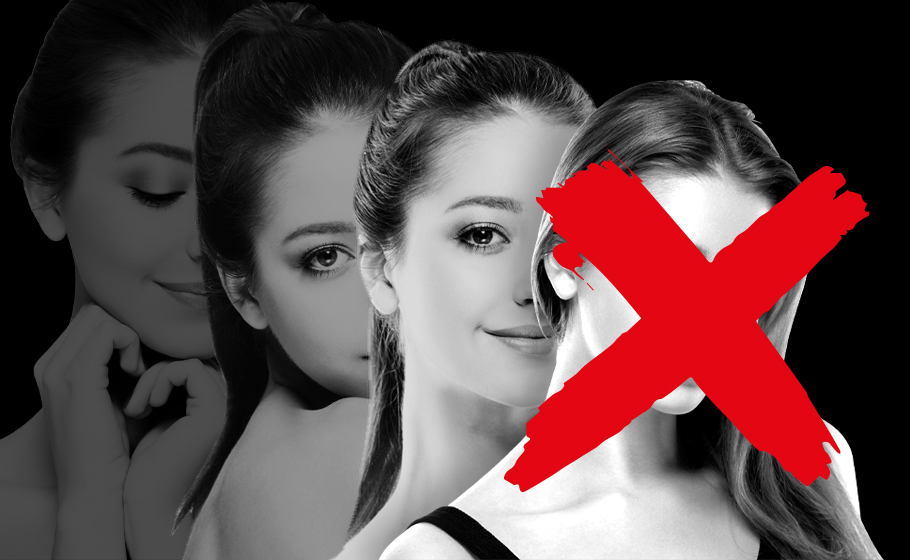
- Home
- News
- Analysis
- States
- Perspective
- Videos
- Education
- Entertainment
- Elections
- Sports
- Features
- Health
- Budget 2024-25
- Business
- Series
- Bishnoi's Men
- NEET TANGLE
- Economy Series
- Earth Day
- Kashmir’s Frozen Turbulence
- India@75
- The legend of Ramjanmabhoomi
- Liberalisation@30
- How to tame a dragon
- Celebrating biodiversity
- Farm Matters
- 50 days of solitude
- Bringing Migrants Home
- Budget 2020
- Jharkhand Votes
- The Federal Investigates
- The Federal Impact
- Vanishing Sand
- Gandhi @ 150
- Andhra Today
- Field report
- Operation Gulmarg
- Pandemic @1 Mn in India
- The Federal Year-End
- The Zero Year
- Premium
- Science
- Brand studio
- Newsletter
- Home
- NewsNews
- Analysis
- StatesStates
- PerspectivePerspective
- VideosVideos
- Entertainment
- ElectionsElections
- Sports
- Features
- BusinessBusiness
- Premium
- Loading...
Premium - India-Canada ties

Ban and beauty: Unfair colour bias runs deep within
Being dark-skinned has always been looked down upon as a disadvantage, as fairness ads harped on the obsession to encourage brides and career women.

When she was a little girl, Jaseena Backer was often referred to as karumi (dark-skinned). While her elder sisters were visibly fairer, she was often taunted and ridiculed for being dark. “These experiences affected my self-esteem and I grew up harbouring a complex,” says the writer-psychologist, pointing out that such biases are not new or limited to an era. “Even grandma’s wisdom...
When she was a little girl, Jaseena Backer was often referred to as karumi (dark-skinned). While her elder sisters were visibly fairer, she was often taunted and ridiculed for being dark.
“These experiences affected my self-esteem and I grew up harbouring a complex,” says the writer-psychologist, pointing out that such biases are not new or limited to an era.
“Even grandma’s wisdom had remedies for lighter skin — from tomatoes to turmeric and lemons,” she recalls and says that this mindset is changing now. “People are calling out the obsessions with fairer skin, but the change is minimal.”
Recently, the government came out with a legislation to ban advertisements that promote fairness creams, having provisions for penalising individuals or organisations with fine or imprisonment.
The Drugs and Magic Remedies (Objectionable Advertisement) Bill, 2020 drafted by the Ministry of Health and Family Welfare also had provisions against advertisements promoting anti-ageing products, sexual performance boosters, memory enhancers, etc.
The focus on the fairness obsession was welcomed by experts who however wondered whether the ban on advertisements, which feed off on deep-seated prejudices against dusky and dark complexion, will bring about any behavioural change in society.
The beauty industry has built fortunes on the fairness obsession — from egging on girls to become fair to become suitable brides to promoting the confident career woman who wears her attitude on her sleeves — and is estimated to touch ₹5,000 crore by 2023.
Perpetrating and permeating bias
Dermatologist Dr Deepika Lunawat says she sees at least one patient everyday who is unhappy with her complexion. She explains that such insecurities are uniform across age groups and strata.
“It is sad to see mothers of girls as young as nine years, bringing them to the clinic, seeking remedy for fairness,” she rues.
Dr Lunawat adds that she has found women addicted to fairness creams that have topical steroids.
“Their skin is sensitive, with a reddish tone and an unusual lustre. It is difficult to make them stop using the product because they have seen a difference in their skin tone after using it,” she points out.
Dr Deepika says that a good part of her job has been to counsel the women, encouraging them to be comfortable ‘in their skin’. “I tell them be it dusky or fair, what matters is a healthy skin. They find it difficult to understand that I cannot give them a shade that they never were. And that a shade card difference, like how some of these advertisements claim, is impossible,” she adds.
Anthropologists point to how concepts of beauty and their links to colour are culturally constructed, not just in India, which is a pluralistic and stratified country, but also across the globe.
S Sumathi, professor and head, Department of Anthropology, and director, International Centre, University of Madras, says, “The colour perspective is well established and we have a binary concept of what is beauty and what is ugly.”
She says advertisements for products like fairness creams are reflections of society. “These advertisements are only trying to communicate what has been always in the back of our mind, and trying to commercialise that weakness,” she says.
“In some of the rural belts in India, I have seen even the ones who just about manage to eke out a living, spend considerably on fairness creams, soaps and shampoos. Even if we say that this is a shift towards cleanliness, they still ignore menstrual hygiene. Therefore, it is evident that among the poor communities too there is a desire to fit in the stereotypes associated with beauty.”
Arunkumar AS, researcher, French Institute of Pondicherry, observes that across communities, the definition of beauty changes, and rarity is a factor.
“While in some places being buxom is beautiful, there are societies where being slim is beautiful. Also, a rare trait or a feature that can make a person stand out becomes beauty,” he explains.
Fair and beauty in films and TV
The societal bias based on skin tone has been reflected in the media industry too, with fair-skinned heroines being favoured over the dark.
Recently Kollywood actress Aishwarya Rajesh claimed that she had found it tough to find a footing in the film world due to her dusky complexion, as the industry evidently preferred fair-skinned actresses, a good number of them hailing from North.

A well-established actress like Kajol too, who stood out as the dusky star amid fair heroines, succumbed to the fairness bug by getting a skin lightening procedure, some years ago.
Hindi films too have over the years profusely used the term fair skin to define beauty. From Rajesh Khanna to Shah Rukh Khan, heroes have serenaded their heroines, singing paeans to their beauty emphasizing their colour or gora rang (white colour).
Being dark-skinned has always been looked down upon as a disadvantage that has to be decoded as a ‘virtue’, with comedy actor Mahmood famously singing, ‘Hum kaale hai toh kya hua dilwale hai’ (so what if I am dark, I am large-hearted).
The small screen has made the dark-skinned girl who is shunned for her colour, a popular plot. Recently, Tamil serials like Chocolate and Barathi Kannamma have dwelt on the subject, pitting a fair-skinned and mean antagonist against a dark skinned girl with a heart of gold, perpetrating the stereotype.
Change in the air
While these can change the discourse and fuel a societal transformation, urging people to look beyond skin colour, these are also moulds and they don’t actually bat for stopping discrimination, says Jaseena.
“There are designers and photographers who have embarked on exercises to shoot with dark models, in a bid to break stereotypes. However, we are yet again making statements on what is normal and abnormal by highlighting colours. And in the end, we are only underlining colour again,” she says.
Naresh Nil, a photographer, and Bharadwaj Sundar, who runs Slingshot Creative, who in 2018 curated a series with photographs of Hindu gods and goddesses, portraying them in dark colour, beg to differ. They say their portrayal of the gods in dark was to defy the archetypal fair skinned portraits that we get to see.
Naresh explains that it was not intended to portray darkness as superior but to only make people understand the unfair preference to lighter skin tones. “We wanted to only show that dark can be divine,” he says, adding that many could relate to it.
While the ban on the ads come as a huge step towards ending the propagation of bias, there is a lot more required to demolish it completely.
Arunkumar notes that the falsehood of advertisements is an off-shoot of the chasm created in society due to colour obsession and has to be dealt with appropriately.
Sumathi feels structural changes in society take a while to manifest and grow, “but they do happen”.
Psychologist Jaseena Backer says that while the calling out of bias has begun, it should be followed by positive content on all possible mediums.
Looking back at her memories, she says, “Now I am more evolved and aware that beauty is not just skin deep.”

